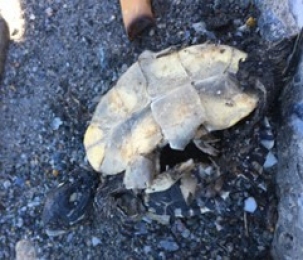Researchers: Jochen Jaeger, Steffy Velosa, and Cassidy MacDonald
Project description:
All seven turtle species found in Quebec are at risk; therefore, there is an urgent need to identify potential high-risk areas of road mortality for turtles across Quebec to provide guidance for the installation of mitigation measures. Our study identified predictor variables that are related to high-turtle presence zones along roads in Quebec, identified the scales at which land-cover variables best predict turtle presence, and determined four statistical models that best predict these high-turtle presence zones. We then applied these models to predict turtle presence for all 100-m road segments along Quebec’s road network (1,700,424 road segments between 90 m and 100 m). Using turtle observations from the Banque d’Observations des Reptiles et des Amphibiens au Québec (BORAQ), we identified 2583 road segments with at least one turtle count and selected 2700 control sites. We considered 16 environmental variables and four structural road variables in the statistical models. For landcover variables, five buffer distances were considered (between 100 m and 500 m). The four best models (using AIC) include between 11 and 19 predictor variables, and their coefficients have the directions as expected from an ecological perspective. The models are similarly good at making predictions, and their predictions are generally in good agreement. They predict a higher likelihood of turtle presence on road segments located near turtle habitat. The scales at which the landcover variables best predicted turtle presence differed between the landcover types and models. The predictions from the four best models are stored in a geodatabase and presented in an interactive website that navigates the roads of Quebec. One of the website’s maps displays clusters of turtle segments that meet specified prediction thresholds. It can be used to quickly identify areas where mitigation should be prioritized.
Funding:
This project is funded by the Ministère de l’Environnement, de la Lutte contre les changements climatiques, de la Faune et des Parcs du Québec.

 Photo credits: Michael Rolheiser
Photo credits: Michael Rolheiser